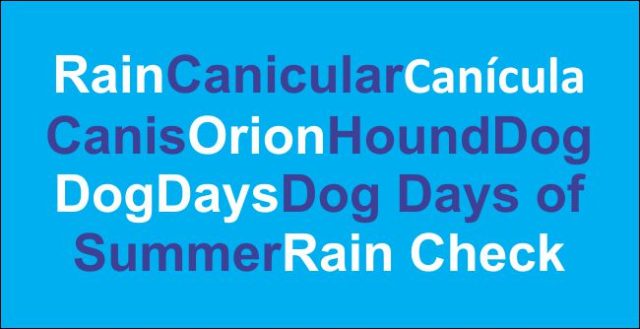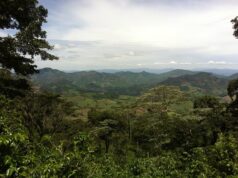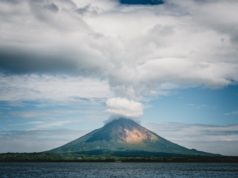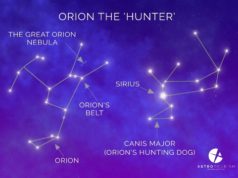The annual Canicular (Canícula) is a period of about 4 weeks covering the 15th of July to the 15th of August when the rains in some areas are of less volume and for fewer days than normal. Some years it can drop to virtually nothing and during others there is no obvious break at all. However, when the rain clouds do make way for sunshine and blue skies, they create Nicaragua’s rain check.
Canicular is from the Latin diminutive form of “canis”, meaning a small dog (perrito) and is also the source of the more familiar English word; canine.
Sirius the star and “Hound of Orion” (a mythical hunter) is seen in the summer sky at this time and the hot sultry days of the Canicular are associated with the Dog Star. The Greeks named the period “hēmerai kynades” (the dog days) which became “The Dog Days of Summer”.
The Canicular 2022
Experts from the Department of Meteorology at the Nicaraguan Institute of Territorial Studies (INETER) predict that this year’s Veranito (or little summer) will be marked by a decrease in rain in some areas.
The canicular period normally affects the Pacific region as well as the central and western sectors of the north and central regions. These areas could have moderate or drier than normal conditions with accumulated rainfall slightly below normal with fewer rainy days.
How much of on impact Nicaragua’s rain check will have will depend on atmospheric conditions generated by the influence of the La Niña phenomenon which is present and will affect the second half of the rainy season starting in August with increased rain, winds and lower temperatures.
Tropical Waves
The tropical waves that bring showers and thunderstorms to Nicaragua at this time of the year start from the coast of Africa and come across the Atlantic Ocean to Central America. These long and wide stretches of low pressure areas are gently pushed by the trade winds as they move across the tropics from east to west.
Nicaragua receives about 60 tropical waves per season.
The recent named “Tropical Storm Bonnie” is a good example of why these tropical waves are watched so carefully by organizations such as the Hurricane Center at The National Oceanic and Atmospheric Administration (NOAA).
About 85% of all hurricanes can be traced back to a tropical wave. Bonnie was no exception as she travelled across Nicaragua as a tropical storm and then developed into a hurricane in the Pacific Ocean off the coast of Mexico.







